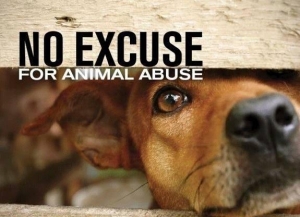Cruelty Prevention
 How do we go about teaching animal cruelty prevention? What are the methods we should use? There are numerous ideas on how to combat animal cruelty and how to punish offenders of this awful crime. However, federal and local governments may not be adequately tracking animal abuse cases so statistics are lacking. Data on domestic violence and child abuse reveal that a staggering number of animals are also victimized by abusive parents or partners each year and these same abusers are also likely to abuse animals as well.
How do we go about teaching animal cruelty prevention? What are the methods we should use? There are numerous ideas on how to combat animal cruelty and how to punish offenders of this awful crime. However, federal and local governments may not be adequately tracking animal abuse cases so statistics are lacking. Data on domestic violence and child abuse reveal that a staggering number of animals are also victimized by abusive parents or partners each year and these same abusers are also likely to abuse animals as well.
- About 10.2 million people are physically assaulted by an partner in the U.S. every year says U.S. Centers for Disease Control and Prevention, 2011, and 62 percent of U.S. households have at least one pet. That is over 5 million pets that are in jeopardy.
- In one survey, 71 percent of domestic violence victims reported that their abuser also targeted their animal (Ascione, 1997).
- In one study of families under investigation for suspected child abuse, researchers found that pet abuse had occurred in 88 percent of the families under supervision for physical abuse of their children (DeViney, 1983).
The Law
The justice system is often to lenient when it comes to animal cruelty cases with minimum punishments given, but as of 2014 all 50 states have felony charges for the worst cases of animal cruelty. Many American citizens and animal lovers think that the current punishments given for cases ranging from minor to severe are strong enough. Also, there is a lack of tracking buy cheap propecia singapore perpetrators of past incidents of animal abuse. One way proposed to curve the trend of animal abuse is creating a national register, similar to the national sex offender register, to where perpetrators would have their names added to a publicly available list. As we live in a republic I strongly suggest you exercise your rights and contacting your local representative to voice your concerns about animal cruelty in the United States.
A Simple Solution
The best way to curve the evils of animal abuse is to teach young minds the importance of our animal friends and show them just what kind of toll the act of abuse can take on animals. What are teachers and politicians doing in schools to foster empathy for animals? Though normal teaching methods are effective, most schools lack programs that are focused on just having empathy in general.
Animal cruelty prevention programs can help foster a new generation of people that can empathize with animals and nature in general. Teachers in the classroom could become the agent for change by beginning to foster young peoples view on the negative impact of animal abuse and teaching them to report all types of abuse. Animals deserve rights and they need us to be their voice and guide a new zeitgeist on animal justice.
If you suspect animal abuse please be sure to contact your local authority. For your safety never intervene. Document and record and supply that information to your local authority.
